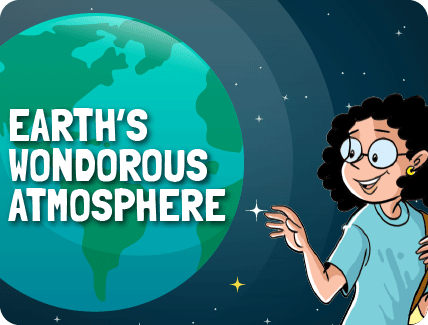Earth’s Wondrous Atmosphere
Writer: Aparna Sundaresan
Illustrator: Manas Bhagwat










We all know that the ozone layer is extremely important to Earth. It’s our ‘sunscreen’; it protects all beings on the planet from too much of the Sun’s ultraviolet rays. But did you know that the other layers of our atmosphere also have roles to play? Let’s find out what they are!